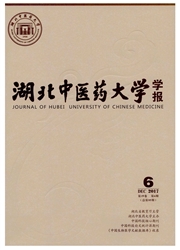

 中文摘要:
中文摘要:
目的 通过观察温针灸对类风湿关节炎(RA)模型大鼠血清及滑膜组织细胞间黏附分子-1(ICAM-1)的影响,探讨温针灸治疗类风湿关节炎的作用机制。方法 雄性SD大鼠60只,随机分为正常组、模型组、针刺组和温针灸组四组,每组15只,采用皮内注射牛II型胶原接种诱发制备大鼠类风湿性关节炎模型,共21d。温针灸组于造模第1天取足三里、肾俞和悬钟穴温针灸治疗,采用手针,刺激量以大鼠耐受为度,悬灸法,15min/次,1次/d,共21d。针刺组治疗针刺方法同温针灸组,不用艾灸。疗程结束后滑膜取材,采用酶联免疫吸附法检测血清中ICAM-1的含量,以免疫组化(SP)法检测ICAM-1在滑膜组织中的表达。结果与正常组比较,模型组大鼠血清中ICAM-1含量明显增多(P〈0.01),滑膜组织中ICAM-1表达明显增高(P〈0.01);与模型组相比,针刺和温针灸均可降低RA大鼠血清中ICAM-1含量(P〈0.05或P〈0.01),可使滑膜组织中ICAM-1表达显著降低(P〈0.01);与针刺组相比,温针灸组大鼠血清中ICAM-1含量明显降低(P〈0.05),滑膜组织中ICAM-1表达明显降低(P〈0.05)。结论 针灸可降低RA大鼠血清中ICAM-1的含量,减少其在滑膜组织中的表达,从而抑制炎性细胞的浸润、黏附、跨内皮移动,使滑膜炎症逐渐好转,关节肿胀、关节僵硬等症状得到缓解,并且温针灸治疗RA优于针刺。
 英文摘要:
英文摘要:
Objective To observe the effect of warming acupuncture on the intercellular adhesion molecule- 1 (ICAM - 1 ) in serum and synovial tissue of rats with rheumatoid arthritis ( RA ), and to explore the mechanism of warming acupuncture on the treatment of RA. Methods Sixty male Sprague Dawley rats were randomly divided into normal group, model group, acupuncture group and warming acupuncture group (n=15 ). The rats were injected with bovine type Ⅱ collagen to induce rat rheumatoid arthritis model for 21 days. Rats in warming acupuncture group was began to treat with manual acupuncture and moxibustion at Zusanli, Shenshu and Xuanzhong acupoints on the 1 st day of modeling, and evaluation in rats pain tolerance, 15min per time, once a day and totally 21 days.Rats in acupuncture group were treated with the same acupuncture method in warm acupuncture group, without moxibustion. The expression of ICAM- 1 in serum was detected by enzyme- linked immun- osorbent assay ( ELISA ). The expression of ICAM- 1 in synovial tissue was detected by immunohistochemistry ( SP ). Results Compared with normal group, the content of ICAM- 1 in the serum of model group was significantly increased (P〈0.01 ), and the expression of ICAM- 1 in synovial tissue was significantly increased (P〈0.01 ). Compared with model group, the content of ICAM- 1 in the serum of RA rats was decreased by acupuncture and warming acupuncture (P〈0.05 or P〈0.01 ), and the expression of ICAM- 1 in synovial tissue was significantly decreased (P〈0.01 ). Compared with acupuncture group, the content oflCAM- 1 in RA rats was significantly lower than that in warming acupuncture group (P〈0.05), and the expression oflCAM - 1 in synovial tissue was significantly decreased (P〈0.05). Conclusion Acupuncture can reduce the content of ICAM- 1 in the serum of RA rats and reduce its expression in synovial tissue, thus inhibit the infiltration, adhesion and trans- endothelial movement of inflammatory cells, so that synovial
 同期刊论文项目
同期刊论文项目
 同项目期刊论文
同项目期刊论文
 期刊信息
期刊信息
